Mile Championship (G1) - Data Analysis
Autumn mile champion decider that often turns into ferocious battle
The Mile Championship is a G1 race that is often decided by a narrow winning margin. The last 10 winners respectively won the race by a “neck, neck, neck, 1 length, nose, 1¼ lengths, head, nose, head, and 1½ lengths” over the runners-up. This year’s race will be held at Hanshin Racecourse because Kyoto Racecourse is undergoing maintenance work. Below, we analyze some trends in results based on data from the last 10 years.
Race favorites have suffered 10 consecutive defeats
Although race favorites have been relatively reliable runners in this G1 race in the past, they suffered consecutive defeats over the last 10 years. These runners achieved decent Top 2 and Top 3 ratios, but they produced zero winners, which is intriguing. Runners backed as 1st to 5th achieved more or less similar Top 3 ratios. While runners backed as 6th and below had low success ratios, they finished in the Top 3 eight times and produced two winners, suggesting we should not overlook them. [Table 1]
[Table 1] Performance by favoritism (last 10 years)
| Favoritism |
Performance
[1st-2nd-3rd-4th or lower] |
Win ratio |
Top 2 ratio |
Top 3 ratio |
| 1st favorite |
0-3-2-5 |
0% |
30.0% |
50.0% |
| 2nd favorite |
1-3-0-6 |
10.0% |
40.0% |
40.0% |
| 3rd favorite |
2-3-0-5 |
20.0% |
50.0% |
50.0% |
| 4th favorite |
3-0-2-5 |
30.0% |
30.0% |
50.0% |
| 5th favorite |
2-0-1-7 |
20.0% |
20.0% |
30.0% |
| 6th favorite or lower |
2-1-5-120 |
1.6% |
2.3% |
6.3% |
Watch horses from Kansai stables
Looking at performances by runners over the last 10 years in terms of affiliation, horses from Kanto and Kansai stables have produced two and eight winners, respectively, revealing a major gap in the number of wins. Stables that have delivered a large number of the Top 3 finishers over the last 10 years include Otonashi Stable (Danon Yoyo, runner-up in 2010; Mikki Isle, winner in 2016; Indy Champ, winner in 2019), Nishizono Stable (A Shin Forward, winner in 2010; Sadamu Patek, winner in 2012), Fujiwara Stable (Tosen Ra, winner in 2013; Fiero, runner-up in 2014 and 2015), and Ikee Stable (Persian Knight, winner in 2017, runner-up in 2018, third-place finisher in 2019; Al Ain, 3rd in 2018). [Table 2]
[Table 2] Performance by affiliation (last 10 years)
| Affiliation |
Performance
[1st-2nd-3rd-4th or lower] |
Win ratio |
Top 2 ratio |
Top 3 ratio |
| Kanto (Miho) |
2-2-2-48 |
3.7% |
7.4% |
11.1% |
| Kansai (Ritto) |
8-8-7-98 |
6.6% |
13.2% |
19.0% |
| Overseas |
0-0-1-2 |
0% |
0% |
33.3% |
Focus on 4-year-olds
Looking at performances by runners over the last 10 years in terms of age, we find that all winners were aged 3 to 6, and that 4-year-olds achieved the highest success ratios within this group. In addition, 4-year-olds who were backed as fifth favorite or higher delivered strong performance of [4-6-3-8] (Top 3 ratio of 61.9%). When planning bets, we should therefore focus on favored 4-year-olds. Conversely, none of the 17 horses aged 7 and above finished in the Top 3. Based on these trends, we should exclude such runners from bets. [Table 3]
[Table 3] Performance by age (last 10 years)
| Age |
Performance
[1st-2nd-3rd-4th or lower] |
Win ratio |
Top 2 ratio |
Top 3 ratio |
| 3 |
2-0-2-32 |
5.6% |
5.6% |
11.1% |
| 4 |
4-6-3-23 |
11.1% |
27.8% |
36.1% |
| 5 |
3-3-4-50 |
5.0% |
10.0% |
16.7% |
| 6 |
1-1-1-26 |
3.4% |
6.9% |
10.3% |
| 7 or above |
0-0-0-17 |
0% |
0% |
0% |
Check favoritism in previous race
Favoritism is the main factor to consider in terms of the previous race. Nine of the last 10 winners had been backed as 3rd favorite or higher in their previous race. While 2017 and 2014 winners Persian Knight and Danon Shark achieved their victories in the Mile Championship while backed as 4th and 8th favorite, respectively, they were both beaten to 5th or lower in their previous race while backed as 2nd favorite or higher. In other words, favoritism in the previous race is an important factor to examine when making predictions. [Table 4]
[Table 4] Performance by favoritism in previous race (last 10 years)
| Favoritism in previous race |
Performance
[1st-2nd-3rd-4th or lower] |
Win ratio |
Top 2 ratio |
Top 3 ratio |
| 1st favorite |
4-2-3-19 |
14.3% |
21.4% |
32.1% |
| 2nd favorite |
3-2-2-16 |
13.0% |
21.7% |
30.4% |
| 3rd favorite |
2-2-0-17 |
9.5% |
19.0% |
19.0% |
| 4th favorite |
0-3-1-18 |
0% |
13.6% |
18.2% |
| 5th favorite |
0-0-2-9 |
0% |
0% |
18.2% |
| 6th-9th favorite |
0-1-1-30 |
0% |
3.1% |
6.3% |
| 10th favorite or lower |
1-0-0-37 |
2.6% |
2.6% |
2.6% |
Keep a close watch on runners coming from G1 races
The last 10 winners came straight from the Fuji Stakes (three winners), the Mainichi Okan (two winners), the Swan Stakes (one winner), the Tenno Sho (Autumn) (one winner), the Sprinters Stakes (one winner), the Yasuda Kinen (one winner), and the Kyoto Daishoten (one winner). A large number of Top 3 finishers had also contested the Fuji Stakes and Swan Stakes as a prep race last time out. In addition, runners that were beaten last time out in either the Sprinters Stakes or the Tenno Sho (Autumn) with a narrow time difference of 0.5s or less achieved performance of [1-2-2-3] (Top 3 ratio of 62.5%), which are favorable statistics. However, only eight runners fell into this group over the last 10 years. If any of this year’s runners come with this kind of record, we should keep a close watch on them. [Table 5]
[Table 5] Performance by previous race (last 10 years)
Previous race |
Performance
[1st-2nd-3rd-4th or lower] |
Win ratio |
Top 2 ratio |
Top 3 ratio |
| Fuji Stakes |
3-4-1-43 |
5.9% |
13.7% |
15.7% |
| Mainichi Okan |
2-0-2-18 |
9.1% |
9.1% |
18.2% |
| Swan Stakes |
1-4-1-33 |
2.6% |
12.8% |
15.4% |
| Tenno Sho (Autumn) |
1-1-2-12 |
6.3% |
12.5% |
25.0% |
| Sprinters Stakes |
1-1-0-6 |
12.5% |
25.0% |
25.0% |
| Yasuda Kinen |
1-0-0-4 |
20.0% |
20.0% |
20.0% |
| Kyoto Daishoten |
1-0-0-1 |
50.0% |
50.0% |
50.0% |
| Fuchu Himba Stakes |
0-0-1-9 |
0% |
0% |
10.0% |
| Shuka Sho |
0-0-0-6 |
0% |
0% |
0% |
| Keisei Hai Autumn Handicap |
0-0-0-5 |
0% |
0% |
0% |
| Other race |
0-0-3-11 |
0% |
0% |
21.4% |
Seek out the winner!
G2 win or Top 2 G1 finish in same year a requirement for victory
One feature shared by the last five winners was that they had all won a G2 race or finished in the Top 2 of a G1 race held in the same year. Although race favorites have suffered consecutive defeats over the last 10 years, the data suggest that a decent previous track record is a requirement to secure a victory. [Table 6]
[Table 6] Last five winners’ performance in G1 and G2 races held in the same year
| Year |
Winner |
Performance in G1 and G2 races
held in the same year |
| 2015 |
Maurice |
Yasuda Kinen, 1st |
| 2016 |
Mikki Isle |
Sprinters Stakes, 2nd, etc. |
| 2017 |
Persian Knight |
Satsuki Sho (Japanese 2000 Guineas), 2nd |
| 2018 |
Stelvio |
Spring Stakes, 1st |
| 2019 |
Indy Champ |
Yasuda Kinen, 1st |
(Yodohito Himezono)
|

- Preview
- Barrier draw
- Past performances of runners

- News
- Race result
- Video
- 2025 English

- 2024 English

- 2023 English

- 2022 English

- 2021 English

- 2020 English

- 2019 English

- 2018 English

- 2017 English

- 2016 English

- 2015 English

- 2014 English

- 2013 English

- Photo Gallery
2025 Winner: Jantar Mantar
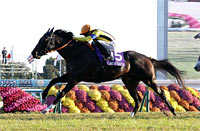
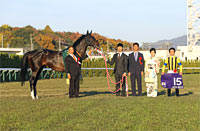
2024 Winner: Soul Rush
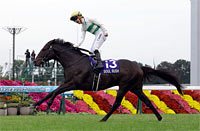
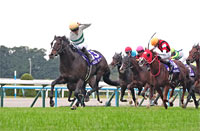
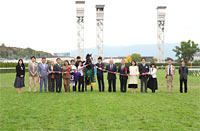
|



















